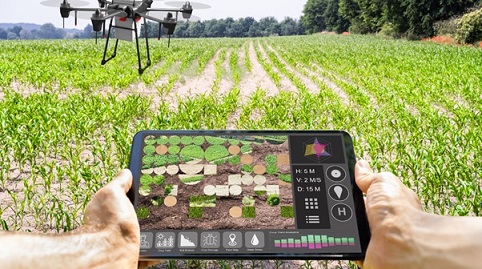Precision agriculture, the art of tailoring farming practices to the specific needs of each part of a field, is no longer confined to expensive, specialized equipment. Today, the humble smartphone, packed with powerful sensors and advanced cameras, is transforming into a potent tool for farmers, democratizing access to data-driven agriculture.
This blog explores the exciting world of mobile apps leveraging advanced smartphone sensors to determine plant health, soil conditions, and other crucial agricultural data, empowering farmers to make informed decisions and optimize their yields.
The Power in Your Pocket: Smartphone Sensors and Agriculture
Smartphones are no longer just for calls and social media. They are sophisticated data collection devices, boasting a suite of sensors that can be harnessed for agricultural applications:
- Cameras: High-resolution cameras, coupled with image processing and AI, can assess plant health, detect diseases, estimate crop yield, and analyze weed distribution.
- GPS: Accurate location data allows for precise mapping of fields, enabling variable-rate applications of fertilizers and pesticides.
- Ambient Light Sensors: These can measure light intensity, providing insights into optimal sunlight exposure for crops.
- Accelerometers and Gyroscopes: These can be used to monitor the movement and orientation of farm equipment, ensuring accurate application of inputs.
- Microphones: In certain specialized applications, microphones can be used for acoustic monitoring, detecting pests or even plant stress through subtle sound changes.
Mobile Apps for Plant Health Assessment
One of the most promising applications of smartphone sensors is plant health assessment. Apps utilizing the camera and advanced image analysis can:
- Detect Diseases and Pests: By analyzing leaf color, texture, and patterns, these apps can identify early signs of diseases or pest infestations, allowing for timely intervention.
- Estimate Nutrient Deficiencies: Changes in leaf color and growth patterns can indicate nutrient deficiencies. Apps can analyze these visual cues to provide recommendations for fertilizer application.
- Monitor Crop Growth: Time-lapse photography and image analysis can track plant growth over time, providing valuable data for yield prediction and crop management.
- Weed Detection: Image processing can differentiate between crops and weeds, enabling targeted weed control.
Mobile Apps for Soil Condition Analysis
Beyond plant health, smartphone sensors can also provide valuable insights into soil conditions:
- Soil Color Analysis: Apps can analyze soil color from camera images to estimate soil organic matter content and moisture levels.
- Integration with External Sensors: Some apps can connect to external sensors, such as soil moisture probes and pH meters, to provide more comprehensive soil data.
- Soil Texture Estimation: Some research has gone into using image processing to estimate soil texture.
Benefits of Mobile Apps in Precision Agriculture
The adoption of mobile apps in precision agriculture offers numerous benefits:
- Cost-Effectiveness: Smartphones are readily available, making precision agriculture accessible to smallholder farmers.
- Ease of Use: User-friendly apps simplify data collection and analysis, requiring minimal technical expertise.
- Real-Time Data: Farmers can access real-time data on plant health and soil conditions, enabling timely decision-making.
- Increased Efficiency: Precision agriculture practices optimize resource use, reducing waste and increasing yields.
- Sustainability: Reduced use of fertilizers and pesticides minimizes environmental impact.
Challenges and Future Directions
While the potential of mobile apps in precision agriculture is immense, some challenges remain:
- Accuracy and Reliability: The accuracy of sensor data can be affected by environmental factors, such as lighting and weather conditions.
- Connectivity: Reliable internet connectivity is essential for data transfer and analysis.
- App Development and Validation: More research and development are needed to create robust and reliable apps.
- Integration: Integration with other farm management software is required for seamless data flow.
Looking ahead, the future of mobile apps in precision agriculture is bright. We can expect to see:
- Increased use of AI and machine learning: This will enable more accurate and sophisticated data analysis.
- Integration with IoT devices: This will allow for seamless data collection from a wide range of sensors.
- Development of specialized apps for specific crops and regions: This will cater to the unique needs of different farming communities.
- Improved sensor technology: Future smartphones will have even more advanced sensors, enabling more precise data collection.
In conclusion, mobile apps are revolutionizing precision agriculture, empowering farmers with the data they need to optimize their yields and promote sustainable farming practices. As technology continues to evolve, we can expect to see even more innovative applications of 1 smartphone sensors in the field, transforming the way we grow our food




